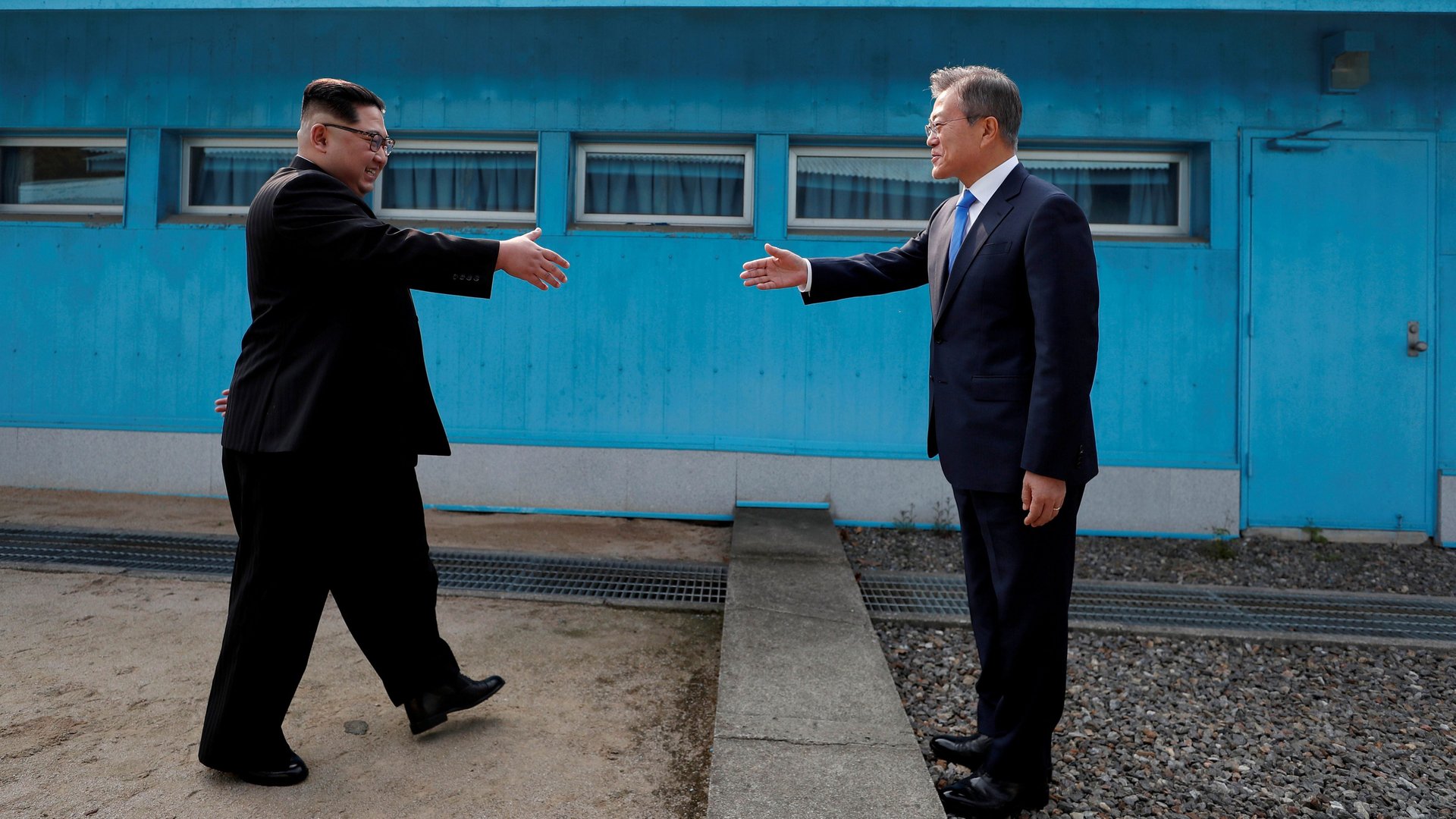Scenes of camaraderie between North and South Korea still leave room for doubt
Even the most cynical of Korea watchers couldn’t help but be stunned by the scenes that emerged from yesterday’s summit between the leaders of North and South Korea. The world looked on as a jovial and warm Kim Jong-un—better known outside his country for bellicose words and an unpredictable temperament—crossed over the military demarcation line into South Korea, the first North Korean leader to do so, and shook hands with his counterpart, president Moon Jae-in. Kim even invited Moon, in an unscripted moment, to step over the line into North Korea, the country from which Moon’s parents fled as refugees after the Korean War. Reporters present apparently gasped at the sight. Or was it at the fact that something off-script happened, however briefly, in the precisely timed proceedings?


Even the most cynical of Korea watchers couldn’t help but be stunned by the scenes that emerged from yesterday’s summit between the leaders of North and South Korea. The world looked on as a jovial and warm Kim Jong-un—better known outside his country for bellicose words and an unpredictable temperament—crossed over the military demarcation line into South Korea, the first North Korean leader to do so, and shook hands with his counterpart, president Moon Jae-in. Kim even invited Moon, in an unscripted moment, to step over the line into North Korea, the country from which Moon’s parents fled as refugees after the Korean War. Reporters present apparently gasped at the sight. Or was it at the fact that something off-script happened, however briefly, in the precisely timed proceedings?
Later, the two delegations talked in the Peace House at the Demilitarized Zone, among them Kim’s sister, Kim Yo-jong. The historic day ended with a state banquet, whose attendees were treated to symbolic entrees including cold noodles made by a Pyongyang chef.
What to make of this diplomatic whiplash? Less than five months ago, North Korea and the US were threatening to blow each other to smithereens, as South Korea’s roughly 50 million inhabitants looked on helplessly. Though US president Donald Trump has taken credit for getting North Korea to the table, much of the credit in fact lies with Moon, who seized the chance presented by the Winter Olympics in February to pursue a detente with his northern neighbor, largely through sport and culture. His efforts also laid the groundwork for a potential meeting between Kim and Trump, with CIA director Mike Pompeo—now US secretary of state—visiting North Korea secretly over Easter weekend to nudge things along.
Friday’s summit ended with the jointly signed Panmunjom Declaration, which states, among other things, that both sides share the goal of “realizing, through complete denuclearization, a nuclear-free Korean Peninsula.” It also stated the two Koreas would seek a meeting with the US and possibly China to create a peace treaty to formally end the 1950-53 Korean War. Those whose families were split up by the war—many of whom are entering their twilight years—were also promised the opportunity to reunite with their kin later this year.
While some may feel heartened by all this, and by the scenes of camaraderie between Kim and Moon, just as many people are deeply skeptical of the Kim regime’s motives. North Korea has a long track record of gaining concessions by agreeing to stop its nuclear activities, only to start them up again later. To that end, a 1991 article from the New York Times that followed another peace agreement between the two Koreas now sounds strangely similar.
The sheer spectacle of Kim televised live from South Korean soil, speaking about peace and reconciliation, should give everyone at least a modicum of hope. But naysayers also have a case for thinking that this might be more of a historic pattern rather than a real breakthrough.